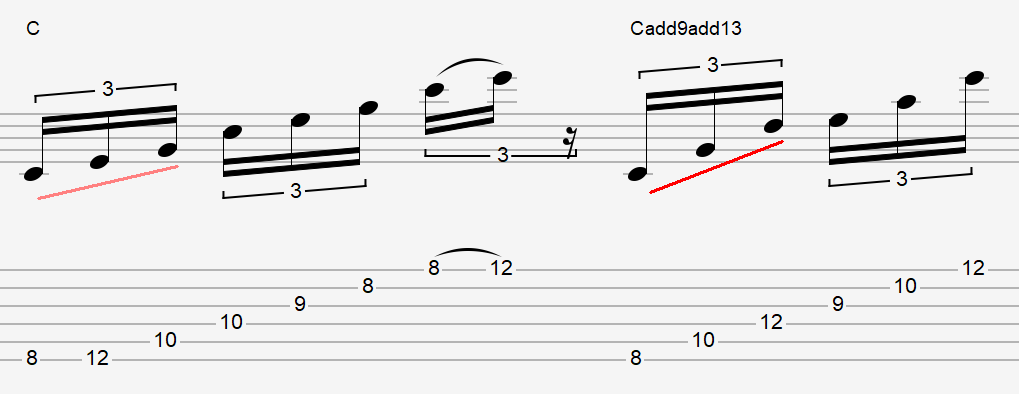Powerful Exercises That Help You Play Guitar Arpeggios Fast And Clean
Ever wish you could play amazing sweep picking arpeggios fast and clean just like players like Steve Vai?
It’s not as unattainable as you think…
In fact, it’s entirely possible to make progress in very little time when you use the right exercises to increase your speed and give yourself pinpoint accuracy.
This requires using exercises focused on building a strong technical foundation with sweep picking.
What kind of exercises, exactly?
I’ll show you!
Implement these sweep picking exercises into your practice routine to get incredible results in no time:
Exercise 1: Get Better Fast By Increasing Your Focus On Rolling Technique Proficiency
It’s typical for the inner notes of a sweep picking lick to get overlooked to focus on the highest/lowest strings.
This is commonly because people are not playing them accurately, and immediately stumble by them while accenting the most obvious to hear notes at the top ends of both registers of the arpeggio.
Getting the hang of rolling technique lets you perfect these middle string notes to make them sound excellent, so the overall pattern sounds totally pro.
Work on your typical arpeggio patterns by making the in-between notes great using rolling as demonstrated in this video clip:Focus your brain on making just a single note sound excellent each time. Then change your focus to one other note. Carry on this way until the overall arpeggio feels perfect and tight.
Question: “When I play arpeggios, the notes sometimes become muffled by my fretting hand. What can I do to fix this?”
Try these things:
Keep your fretting hand thumb behind the neck of the guitar (approximately behind the middle finger) and keep the fingers perpendicular to the frets.
Moving the thumb behind the neck will already go a long way towards making the other fingers fall into the right position. This will help to stretch the fingers more easily and also minimize risk of injury.
Isolate the rolling motion of your fretting hand and
practice making it cleaner.
You need to work on releasing the pressure from a note that
has already been played right when the next note is ringing (to avoid both
notes bleeding/ringing together).
Do this very slowly in total isolation first to get used to the motion (and remember to bend the first knuckle of the finger backwards to collapse it) and then work on adding other notes of the arpeggio to practice it in context.
Exercise 2: Ensure You Sustain Steady Picking Hand Momentum
Your sweep picking breaks down and becomes unclean without steady momentum in your picking hand. The good news is, this is not a tough skill to develop and get better at.
A wonderful way to become a pro at keeping momentum in your picking hand is to work on arpeggio sweep picking patterns that include playing 2-3 notes on one of the middle register strings of the pattern.
This means you’ll have to preserve momentum while also using legato.
This makes ordinary arpeggios seem a lot easier while also greatly improving your entire sweep picking technique.
Exercise 3: Practice Sweep Picking Arpeggios That Have Larger Stretches And Note Distances
Practicing sweep picking arpeggios with bigger stretches that range across greater intervals not only feels unique, but it has the power to make “standard” patterns feel effortless in contrast.
Why?
Most typical arpeggio patterns have a legato hammer on/pull off at the highest or lowest note in the arpeggio.
This allows you time to think about what to do next so you can make a fast change mentally to proceed with the pattern.
While using different wide interval arpeggios, this makes things a little different.
As an example: Take a look at the arpeggio distinction below.

Quick Tip For Playing Better Quality Arpeggios
Think more carefully about the function of the chords in the progression you are soloing over and base your phrasing choices more on the mood of the chord.
For
example:
Using the I – IV – V chord progression, play slower over the I chord and faster over the V chord. Build up to speed over the IV chord.
Practice arpeggios slower to work on connecting the notes of one arpeggio to those of another in a more smooth way. Add speed for musically expressive purpose vs. “just to play fast.”
Make
sure to pay attention to your timing by investing a few minutes per day (such
as while warming up) playing arpeggios to the metronome at 1 note per click.
